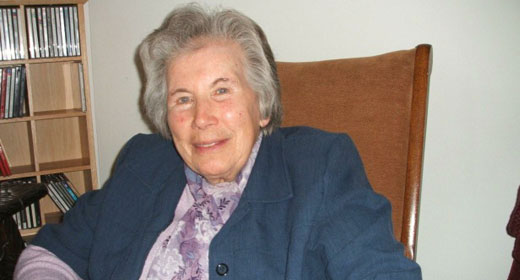Ommm. It’s often the first and last sound in your ears in a yoga class. But what does it mean? by Valerie Reiss: Perhaps you’ve heard it defined as “the sound of the universe” — but what does that really mean?
by Valerie Reiss: Perhaps you’ve heard it defined as “the sound of the universe” — but what does that really mean?
Turns out, a lot — and yet, like many spiritual (and especially yogic) things, it’s not so easy to define. “It’s big. Om is nebulous, and it’s vague. It can mean almost anything,” says Yoganand Michael Carroll, dean of the Kripalu School of Yoga.
For starters, it’s all about sacred threes. Most faiths have trinities in their roots and Hinduism, where om was born, is no different. Even though it’s usually pronounced seamlessly so it rhymes with “home,” om is made up of three syllables: A, U, and M, or, phonetically, “aaah,” “oooh,” and “mmm.” Experts say these syllables can represent a slew of trios, including: the heavens, earth, and the underworld; the Hindu gods Brahma, Vishnu, and Shiva (aka creator god, sustainer god, and destroyer god); and the waking, dreaming, and dreamless states — “to represent all of consciousness,” says Yoganand.
The sound appears to have first cropped up in the Upanishads, a collection of sacred texts that inform Hinduism. The Mandukya Upanishad, which is entirely devoted to om, begins like this: “Om is the imperishable word. Om is the universe, and this is the exposition of om. The past, the present, and the future, all that was, all that is, all that will be is om. Likewise, all else that may exist beyond the bounds of time, that too is om.” That pretty much covers it; om is big indeed.
Om is also considered the mother of the bija, or “seed” mantras — short, potent sounds that correlate to each chakra and fuel longer chants (like, say, Om Namah Shivaya). Depending on who you talk to, it relates to either the third eye or the crown chakra, connecting us to the Divine. No wonder its core to some Buddhist systems and other Indian religions. Some say it’s even among the sounds recorded in deep space — on NASA’s website, Earth itself sounds a bit om-y.
Some scholars say that the shape of the visual om symbol embodies each of its syllables — the three is the Sanskrit letter for “ahh,” that same three with the mini S on it is “oooh,” and the bindhi and half-moon at the top are the “mmm.” Some say the symbol is connected to Ganesh, the Hindu half-elephant god who removes obstacles, because if you squint, you can see his rotund curves and graceful trunk represented.
Many layers of meaning are there for the delving, yet om has endured in popularity simply because of its vibration — how we feel when we chant it. “The sound itself seems to calm the nervous system,” says Stephen Cope, founder of Kripalu’s Institute for Extraordinary Living, and author, most recently, of The Great Work of Your Life: A Guide for the Journey to Your True Calling. “Like all chants, it gathers and focuses the mind, and in that state it’s not vulnerable to the rising of the odd thought that will create grasping or aversion. It shifts us out of our ordinary discursive mind and into a more contemplative mode.”
It also unites us as a group. “When we sound om together, we’re aligning body/mind/spirit; we’re aligning with one another; we’re aligning with the universe because it’s the sound of the universe and we’re referencing something real,” says Bhavani Lorraine Nelson, who leads workshops around the world on the power of the voice and is the creator of the CD series Meditation Made Possible. “It’s a very grounding and peaceful sound. One teacher said that if you simply go through life chanting om, the very air around you will sparkle.”
That sense of infinity you feel as that final “mmm” gradually fades into nothing is enhanced by what many call the fourth syllable of om (sorry, trinity-lovers!): silence. “So often in my classes we will sound om, letting those three-voiced parts go very consciously through the cathedral of the mouth, and then sit for a moment in that silence after and simply observe what that feels like,” Bhavani says.
Yoganand says that chanting om also creates a link with those who have practiced before us. “It’s a sound that validates oneness and harmony,” he says. “We chant it because yogis have for thousands of years. And when we chant it, we’re connecting with those yogis in a ritual way, and drawing upon the support of the practices they’ve been doing for a long, long time.”
Ommm.
Om 101
- For one tiny sound, om is deeply complex. Apply these simple mouth adjustments just as you would shift an asana to maximize its potency.
- For “ahh,” relax the jaw. The sound rises from the belly, lips are parted, and the tongue doesn’t touch the palate.
- In “oooh,” the lips gently come together as the sound moves from the abdomen into the heart.
- During “mmm,” the tongue floats to the roof of the mouth, and the lips come together to create a buzzing in the head. Some say this syllable goes on twice as long as the others.
- Silence — or om’s “fourth syllable” — follows while the sound fades into nothing. Observe how you feel now.








































